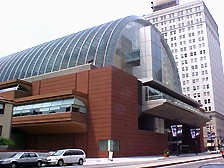 |
|
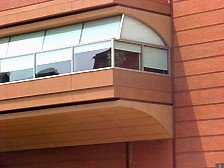 |
| The Kimmel Center is 146
' high , 400 ' long, and 250 ' wide. It sits on a 2.3-acre site. This
view is from Broad Street (looking North). |
|
The balcony spaces seen here
and the indoor/outdoor restaurant (seen in gray at the photo at left)
are cantilevered on the outside of the building. |
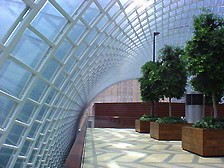 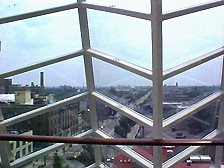 |
|
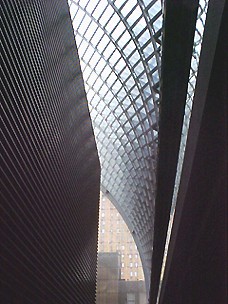 |
| As seen from the rooftop garden
(top), the the roof structure is a series of inverted semicircular V-shaped
trusses. The trusses are covered by 5,808 glass panels. |
|
There are 3.6 acres (156,677
square feet) of glass glazing. |
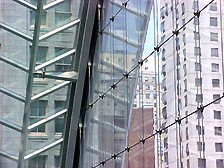 |
|
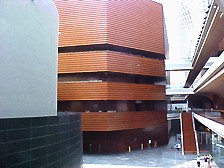 |
| Large curved I-beams support
the end walls. Steel cables that are 7/8" thick suspend steel weights,
each weighing 12 tons. The glass panels are attavhrf at the corners to
the cables. Silicone seals the edges of the panes.The wall can flex 2
1/2 ' in either direction in high winds. |
|
The 650 seat Perelman Theater
(seen at left) features a rotating stage that allows two different sets
to be used at the same time. The stage can be rotated in 6 minutes. The
2,547 seat Verizon Hall (seen at right) is coverd with Makore wood, which
is resistant to the sun's ultraviolet rays and the fading they often cause. |
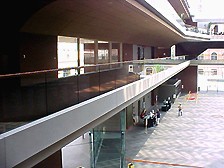 |
|
 |
| Throughout the building many
cantilever structures are found such as the walkways seen above. Similarly
the walkways on the exterior of the wooden Verizon Concert Hall and bar
area on the exterior of the Perelman Theater (seen in the photo at right)
are cantilevered out over the spaces below. |
|
A cafe and bar area is located
on Commonwealth Plaza (between the concert halls). A performance stage
is also found in this open area (bottom left). |
 |
|
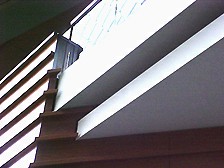 |
| Walkways connecting to Verizon
Hall are actually cantilevered from the exterior wall. |
|
Note how the walkway floats
seperately from the wooden Verizon Hall structure. This is done to eliminate
any possible vibration from the street or subway. |










